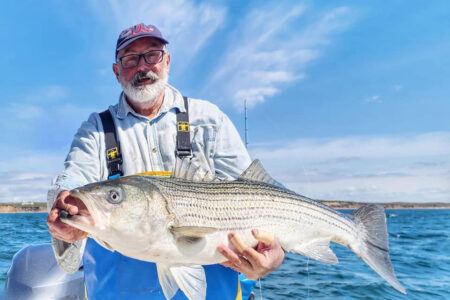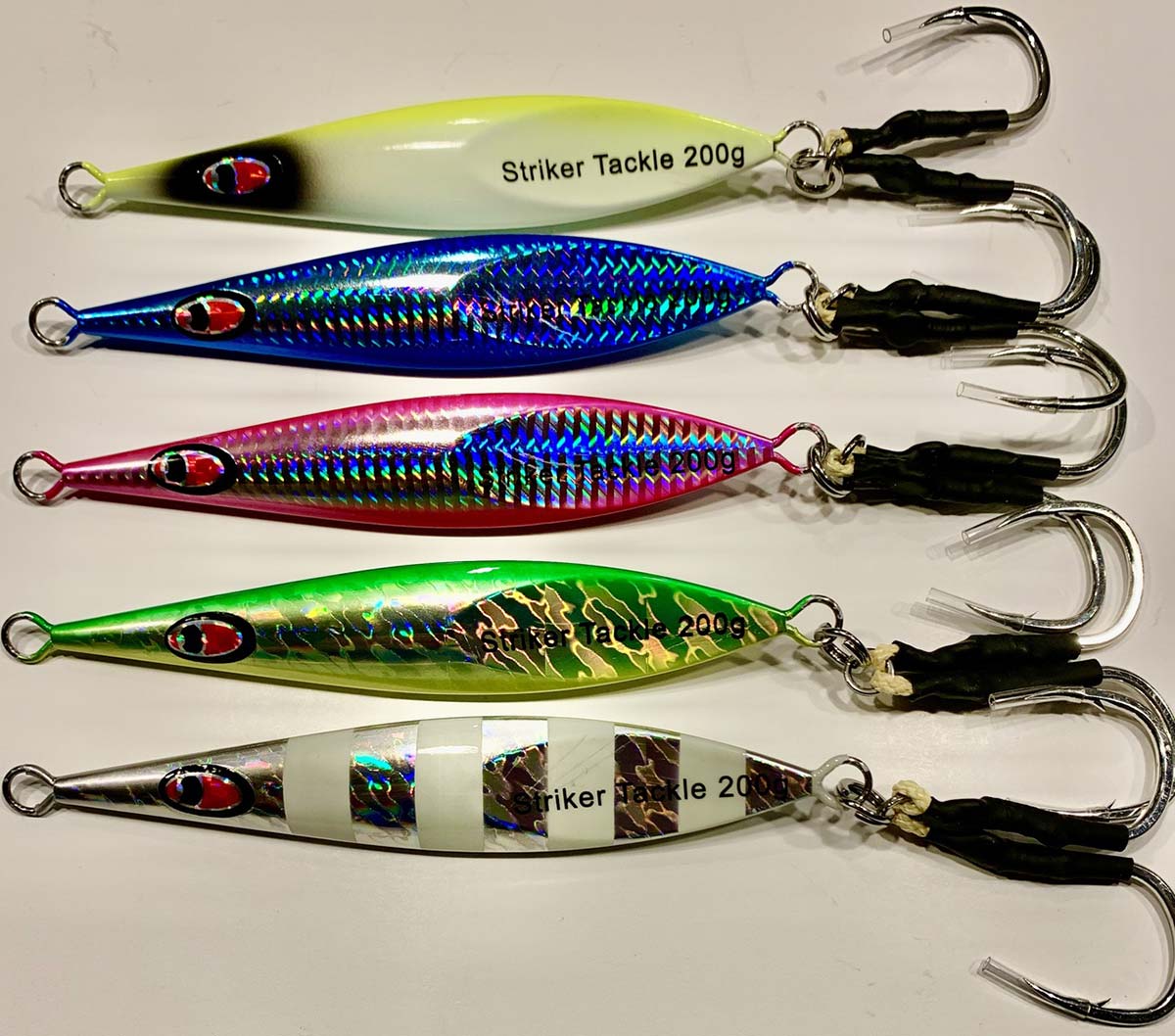
Lighten your load for outstanding fall striped bass action.
As the 2020 season starts to wind down for most of us out on the water, now is the time to experiment and think outside of the box with approaches and tactics. Sure, deep water tog and a few coastal residents in tight can keep anglers occupied through much of December, but by and large the main striper migration will be approaching its wintering grounds off DELMARVA soon enough.
However, the fish that remain behind provide endless opportunities for trying out some new and unconventional techniques.
There are a couple different situations to capitalize on here, namely jigging the lumps and rips and throwing a myriad of profiles in the back bays. With this year yet again trending warmer than average for most of the Eastern Seaboard, there’s a pretty good chance that we’ll see good numbers of striped bass hanging around coastal waters into the official start of winter.
This sets up a unique opportunity when the fish may be preying on smaller baits, which presents the perfect chance to see how some of these alternate techniques can truly shine.
Get Jiggy With It
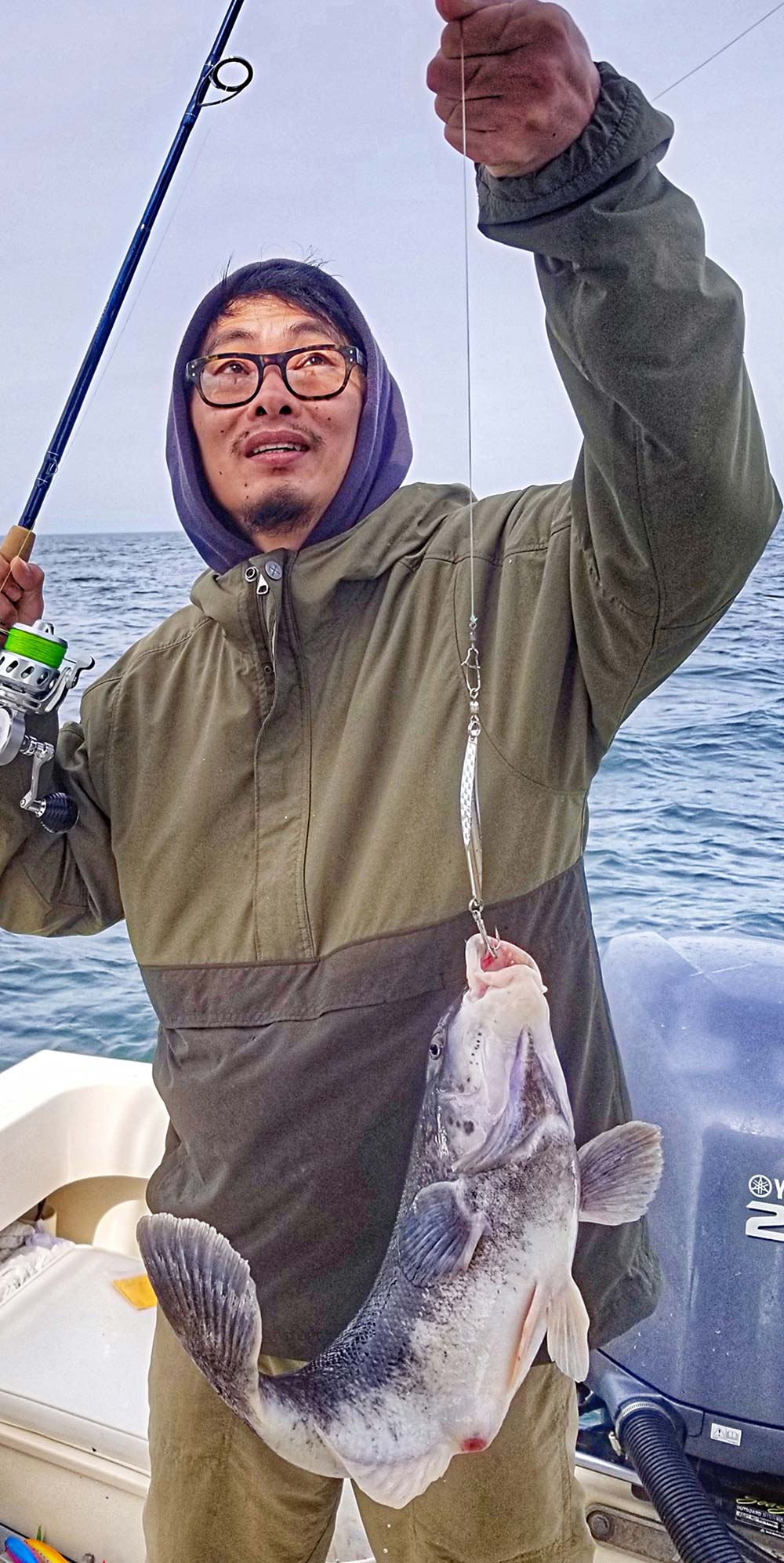
We all know of the time-tested classic diamond jig for late season bassing, but fewer people are aware of the efficacy of its Japanese counterpart: slow pitch jigging. Founded and refined by Japanese commercial fishermen decades ago and popularized in Florida over the past 5 years or so, slow pitch jigging has proven to be deadly in the right conditions. Stateside, this method has been modified for an array of species both pelagic and inshore, but every variation relies on letting lighter gear do more of the work for you.
Compared to the all-purpose diamond jig, the more specialized slow pitch jig needs some help in terms of rod and reel to unlock its true potential. Firstly, keep the meat stick conventional setups at the dock; this approach universally requires a medium action rod that has a softer tip to it than you would ever expect to see as part of a striper setup. It’s purely personal preference as to whether you choose to employ a spinning or conventional option here, but always err on the side of lighter gear.
When this technique was first brought to the Americas, captains were paying hundreds and even thousands of dollars to import the necessary tackle that this fishing demands. Fortunately, companies like Tsunami are now putting out products like the Trophy Slow Pitch Series for under $100, making it relatively inexpensive to get your feet wet. These rods can definitely double as a standard inshore setup for fluke, scup, etc., or at least be a backup to have on the boat in case another rod in the arsenal is knocked out of commission.
Reel selection is pretty straightforward here, as any lightweight model is going to get the job done. If you want to keep with a more traditional style though, conventionals like the Maxel Hybrid 20 and Daiwa Saltiga definitely fit the bill. The key is to have enough power to fight the fish primarily through the reel, largely because the rod alone doesn’t have enough power to heave a fish to the surface. Keeping with the theme of lightweight tackle, 20-pound braid is generally all that’s required. Spinning choices are nearly endless, with the key for these setups being the technique and skill more so than the rod and reel combo itself. Remember, you can always play a fish out on lighter tackle and still have a successful landing and release.
Selecting a jig itself can become a daunting task when looking at what the market has to offer, but there are some specific details that can make shopping an easier and frankly enjoyable experience. For the purposes we have, mostly dealing with shallow waters and relatively small presentation, a jig with a single pair of hooks at the nose will suffice. Other options, generally designed for pelagic use, may have mid-body hooks or even assist hooks on the other end. Hooks on the front only may seem like an odd selection, but we’ll take a look at how it will affect the action of a jig a little later on. Given their origins, slow pitch jigs are usually sized in grams, so jigs in the 75g to 175g (roughly 2 to 6 ounces) range are in the sweet spot. When choosing a weight to start out with, always push a little bit lighter than normal for the conditions.
Tactics & Techniques
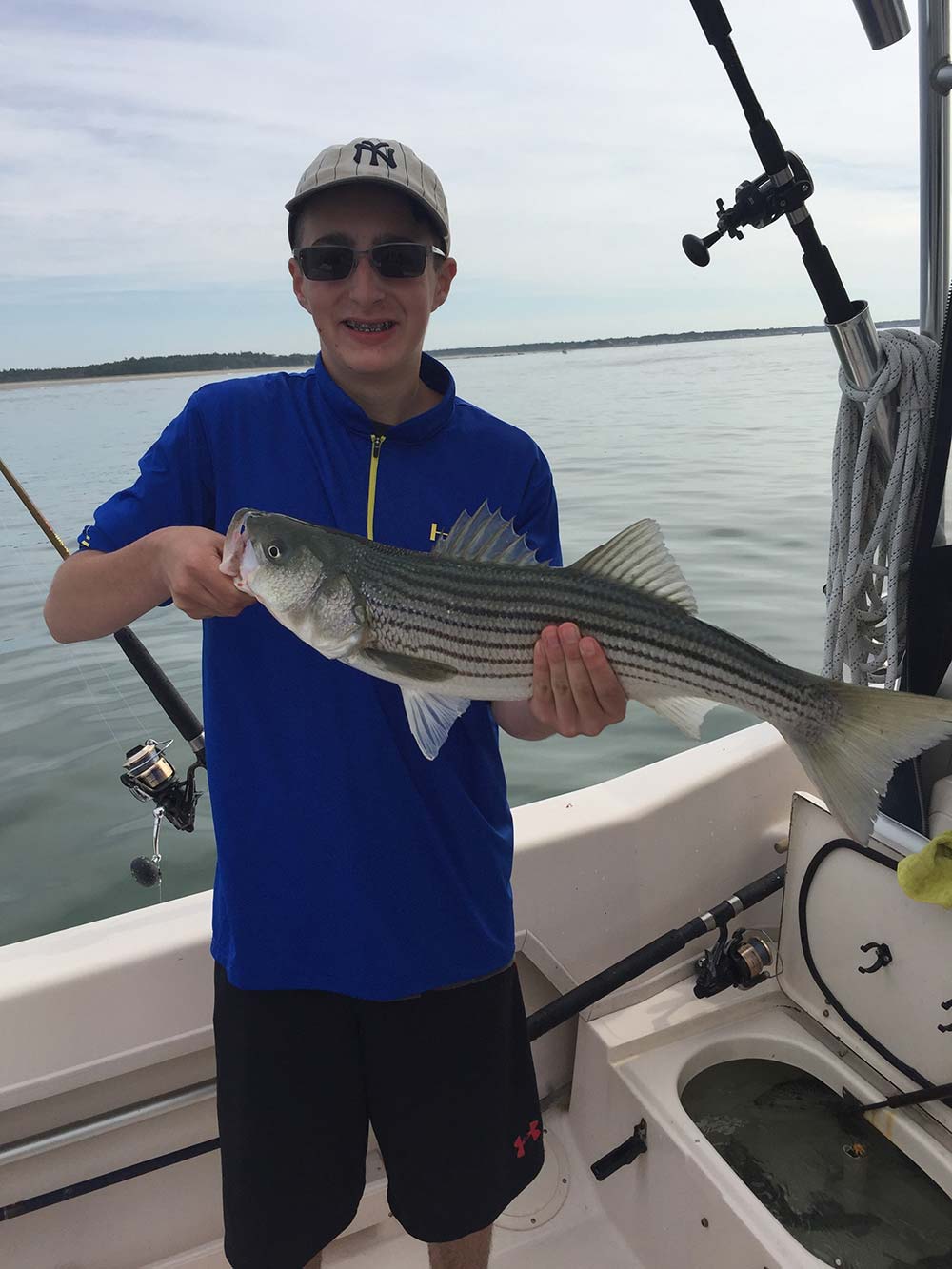
The reason to always strive for lighter jigs is simply because you aren’t going to be blind jigging the whole water column like you would with a diamond jig. Instead, be attentive and match up marks on the fishfinder with where you seem to get hits and focus solely on that portion; in water over 30 feet or so, this is probably only going to be a 5- to 10-foot section. I mentioned earlier that the rod is going to feel light for jigging some of those heavier lures, but that’s because you’ll be reliant on having it do most of the work for you.
The easiest way I can explain this to people is to first think of the rapid motion put on a bucktail when targeting fluke. The idea in this situation is to transfer all of the motion to the jig through the rod, therefore you need a stiffer tip that won’t absorb the energy you put through it. Slow pitch jigging is the contrary. You want the rod to load with the weight of the jig before you give it any motion. This is achieved by giving a crank or two on the reel, giving the rod a second to connect with the jig, and then making a gentle but deliberate sweep upwards before letting the jig softly flutter back down again. The single pair of hooks aids in this action as well because there are no assist hooks that can get tangled with it and cause it to spiral.
Most of the hits will occur on this flutter due to its similarity of looking like an injured bait in the water. This is a much different feeling than the fast-paced nature of diamond jigging where it’s a hectic rush to get the jig up 10 to 15 cranks before dropping it back to the bottom like a lead sinker, which in actuality can become tiring pretty quickly. While it may not become a mainstay choice in most anglers’ lineups, slow pitch jigging gives an intriguing alternative for targeting striped bass of any size and will definitely see increased adoption in the coming years.
Once the jig bite dies down as the deeper waters continue to cool off, the main body of stripers will proceed to move down the coast. For a few weeks in November, the final explosion of bait and the subsequent stripers that follow behind offer a unique opportunity for anglers. This time period closely mirrors the spring run of smaller bass in that the fish are stacked up in confined areas, but the busy holiday season coupled with the volatile weather of late autumn seems to deter much of the crowd.
For those of us willing to brave the conditions, there is an endless playground for experimentation of nearly anything we have ever wanted to try. Whether it be some homemade invention or simply a lure or rig designed for a completely different use, now is the time to break it out and really just have some fun.
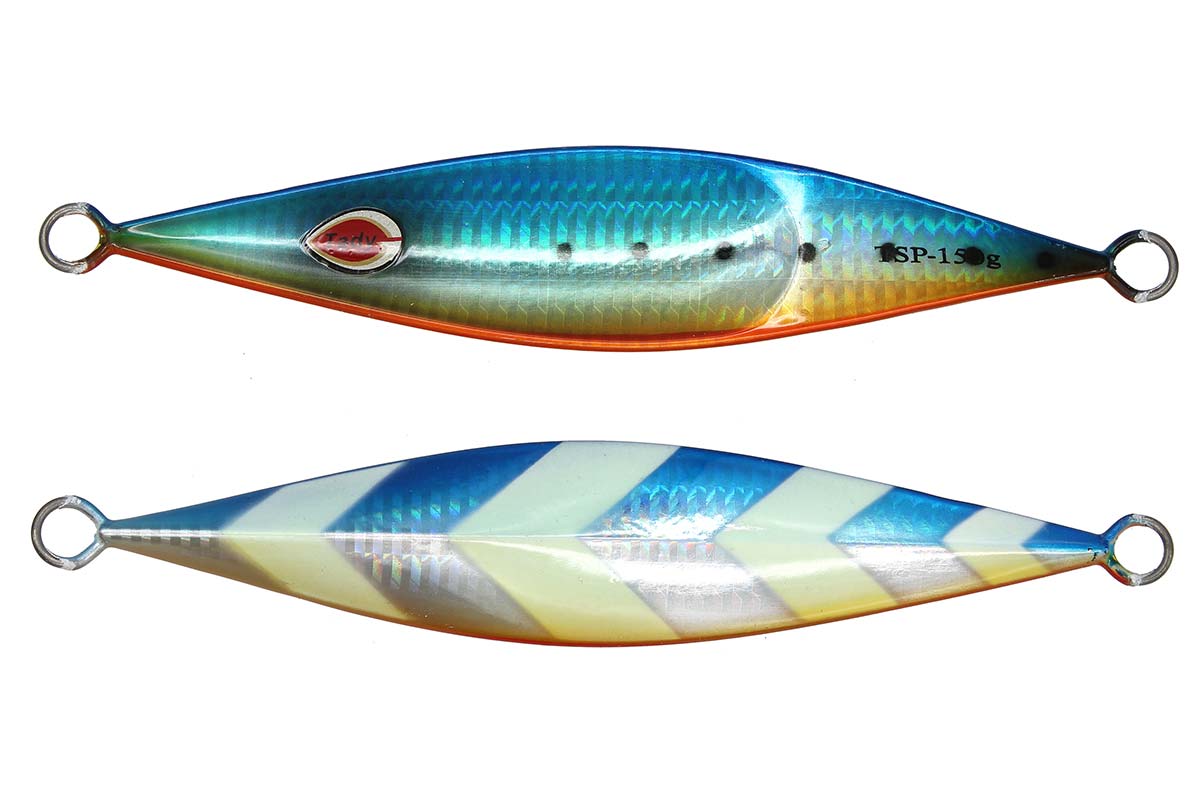
As we move later into the season, fish are generally on smaller baits that take advantage of warmer daytime waters in the shallows. This doesn’t mean the stripers are picky, though, as I have taken fish on everything from a trout spoon up to baits that have the equivalent profile of a 9-inch Slug-Go. That’s the whole beauty of this short-lived fishery – literally anything goes. Don’t be afraid to get out there with the little 6-foot ultralight rod and pitch whatever you happen to have right off the dock. As long as the bait is still there, the fish are going to be feeding on anything they can get their mouths around.
However, this certainly doesn’t mean you can’t have a strategy. There have been days where I’ve gone out just to see which homemade jig variation that I’ve made with some paint and superglue will work the best. You can be as systematic or as carefree about this fishing as you want. The reduced pressure that these fish receive compared to the more popular spring season means that all bets are off, and you can truly write your own ending to cap off the year.


